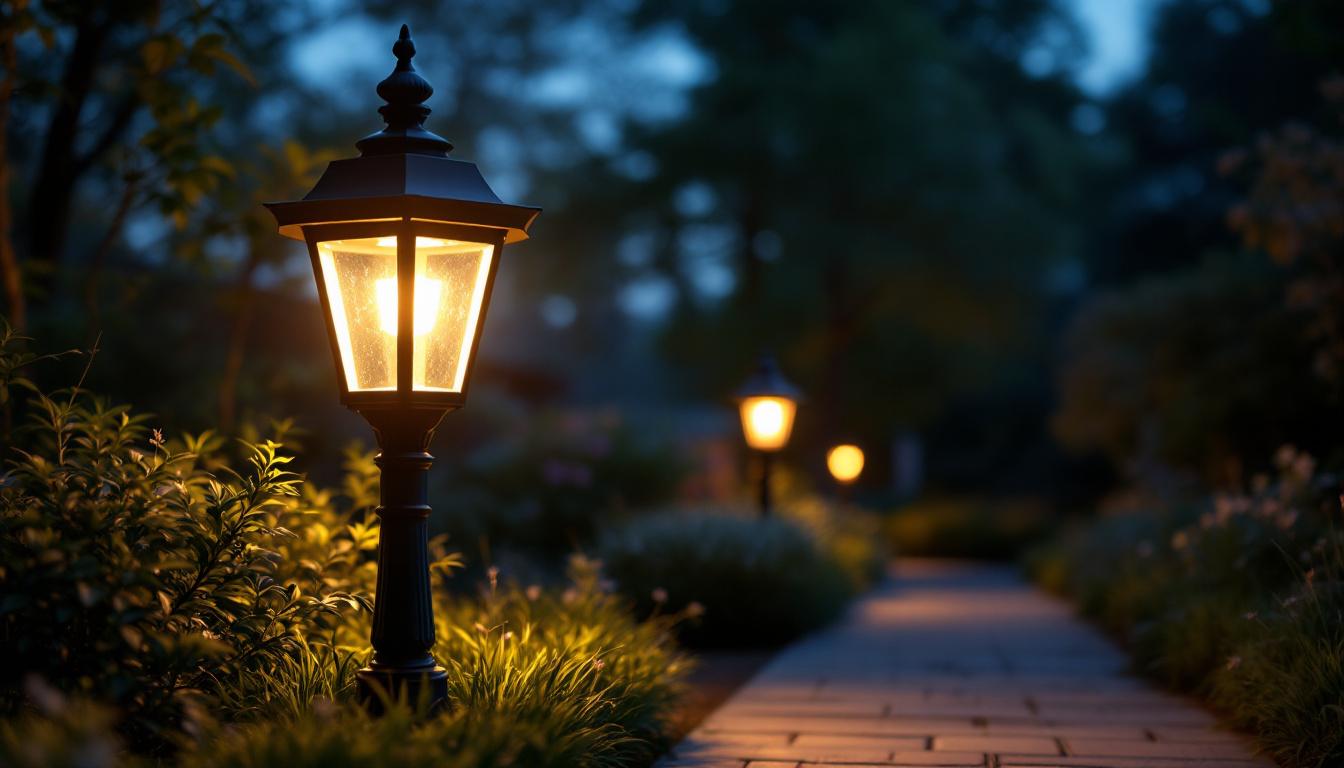
Lighting plays a crucial role in enhancing the architectural beauty and spiritual ambiance of a church. For lighting professionals, understanding the unique requirements and challenges of illuminating these sacred spaces is essential. This article provides a comprehensive checklist designed specifically for lighting contractors working in church environments, ensuring that every project meets the aesthetic and functional needs of the congregation.
Before diving into the technical aspects of lighting design, it is vital to understand the space being illuminated. Churches often feature high ceilings, intricate designs, and a variety of materials that can affect how light is perceived. The interplay of natural and artificial light can dramatically alter the mood and ambiance, making it crucial to consider the time of day and seasonal changes that influence the interior lighting.
Each church has its own architectural style, from Gothic to modern. Recognizing the unique features of the building, such as stained glass windows, wooden beams, and stone walls, will inform the lighting approach. For instance, the use of warm tones can accentuate wooden interiors, while cooler tones may enhance the clarity of stone structures. Additionally, the placement of light fixtures must be carefully planned to avoid casting harsh shadows on important architectural details, allowing the congregation to appreciate the artistry of the space fully. Incorporating dimmable lighting options can also provide versatility, enabling the atmosphere to shift from bright and welcoming during services to soft and contemplative during quiet moments of reflection.
The layout of the church is another critical factor. Consider the areas of focus, such as the altar, pulpit, and seating arrangements. Lighting should guide the congregation’s attention to these focal points while ensuring that all areas are adequately illuminated. A well-thought-out lighting plan will create a sense of balance and harmony throughout the space. Moreover, the use of layered lighting—combining ambient, task, and accent lighting—can enhance the overall experience, allowing for different lighting scenarios that cater to various events, from weddings to community meetings. Thoughtful placement of light sources can also help define pathways and entrances, ensuring that visitors feel welcomed and oriented as they enter the sacred space.
Lighting can also impact the acoustics of a church. Bright, reflective surfaces may create echoes, while softer lighting can help absorb sound. Understanding how light interacts with sound in a church setting is essential for creating an inviting atmosphere that enhances both worship and community gatherings. The choice of light fixtures and their materials can play a significant role in this dynamic; for example, fixtures with fabric or textured finishes can help diffuse light and sound alike. Additionally, integrating acoustic panels or sound-absorbing materials into the design can further refine the auditory experience, ensuring that sermons and musical performances resonate beautifully throughout the space. This holistic approach to lighting and acoustics not only elevates the worship experience but also fosters a deeper sense of connection among congregants.
Lighting in churches can be categorized into several types, each serving a distinct purpose. Selecting the right combination of lighting types is crucial for achieving the desired effect.
Ambient lighting provides overall illumination for the space. This type of lighting should be soft and diffused to create a welcoming atmosphere. Consider using LED fixtures that can mimic the warmth of traditional incandescent bulbs while offering energy efficiency. Dimming capabilities can also enhance the worship experience by allowing for varying light levels during services.
Task lighting is essential for specific activities, such as reading scripture or performing musical pieces. Adjustable fixtures, such as spotlights or track lighting, can be strategically placed to provide focused illumination where needed. This ensures that congregants can engage with the service without straining their eyes.
Accent lighting highlights architectural features, artwork, or religious symbols within the church. This type of lighting should be carefully designed to avoid glare while enhancing the beauty of the space. Consider using color filters or adjustable fixtures to create dynamic effects that can change with the liturgical seasons or special events.
In modern church lighting design, control systems play a pivotal role in managing the various lighting types effectively. A well-designed control system can enhance flexibility and creativity in lighting design.
Manual controls allow for straightforward adjustments, while automated systems can offer advanced features such as pre-programmed scenes and remote access. Automated systems can be particularly beneficial for larger churches, where managing multiple lighting zones can become complex. The choice between manual and automated controls should be based on the church’s size, budget, and technical expertise.
Consider how the lighting system will integrate with other technologies in the church, such as sound systems and video equipment. A cohesive approach to technology can enhance the overall worship experience and streamline operations. Collaborating with other professionals, such as AV specialists, may be necessary to achieve optimal results.
As environmental concerns continue to grow, lighting professionals must prioritize energy efficiency and sustainability in their designs. This not only reduces operational costs but also aligns with the values of many congregations.
LED lighting has revolutionized the industry, offering significant energy savings and longer lifespans compared to traditional lighting options. When selecting LED fixtures, consider their color temperature and CRI (Color Rendering Index) to ensure that the lighting complements the church’s aesthetic.
Implementing smart lighting solutions can further enhance energy efficiency. These systems can automatically adjust lighting levels based on occupancy or time of day, ensuring that energy is not wasted. Additionally, smart controls can provide valuable data on usage patterns, allowing for informed decisions about future lighting needs.
Safety is paramount in any lighting installation, especially in a church setting where large gatherings occur. Adhering to safety regulations and best practices is essential to protect both the congregation and the property.
Ensure that all electrical installations comply with local codes and regulations. This includes proper wiring, circuit protection, and grounding. Regular inspections and maintenance should be part of the ongoing care for the lighting system to prevent hazards.
Lighting should also take into account the needs of all congregants, including those with disabilities. Ensure that pathways are well-lit, and consider the use of contrasting colors to assist those with visual impairments. Thoughtful lighting design can create an inclusive environment that welcomes everyone.
Churches often host a variety of events, from regular worship services to weddings, funerals, and community gatherings. The lighting design should be versatile enough to accommodate these diverse needs.
Designing a lighting system that can adapt to different types of services is crucial. This may involve using adjustable fixtures, dimmers, and programmable scenes that can be easily switched based on the event. For instance, a more subdued lighting scheme may be appropriate for a funeral, while a vibrant setup may be desired for a wedding.
Churches often celebrate various liturgical seasons, each with its own themes and colors. The lighting design should be flexible enough to reflect these changes throughout the year. Consider using colored filters or adjustable LED fixtures to create a dynamic atmosphere that enhances the worship experience.
Successful lighting projects require collaboration among various stakeholders, including church leaders, architects, and contractors. Open communication and a clear understanding of each party’s vision are essential for achieving the desired outcome.
Church leaders often have specific visions for how the lighting should enhance the worship experience. Engaging with them early in the design process can provide valuable insights and help align the lighting design with the church’s mission and values. Regular check-ins throughout the project can ensure that the final design meets their expectations.
Collaboration with architects is crucial, especially in historic churches where preserving the original design is a priority. Understanding the architectural vision can help lighting professionals create a design that complements the existing features while incorporating modern technology.
Once the lighting system is installed, ongoing maintenance is essential to ensure its longevity and performance. A well-maintained system not only enhances the aesthetic appeal but also contributes to the safety of the church environment.
Establishing a routine inspection schedule can help identify potential issues before they become significant problems. This includes checking for burnt-out bulbs, ensuring that fixtures are clean, and verifying that control systems are functioning correctly. Regular maintenance can extend the lifespan of the lighting system and reduce long-term costs.
Training church staff on how to operate the lighting system is equally important. This includes understanding how to adjust settings for different events, troubleshoot minor issues, and perform basic maintenance tasks. Empowering staff with this knowledge can enhance the overall functionality of the lighting system.
Illuminating a church is a multifaceted task that requires careful consideration of various factors, from architectural features to energy efficiency and safety. By following this essential checklist, lighting professionals can create beautiful, functional, and sustainable lighting designs that enhance the worship experience for congregations.
In a world where technology continues to evolve, staying informed about the latest trends and innovations in lighting design is crucial. By embracing creativity and collaboration, lighting professionals can contribute to the spiritual and communal life of churches, ensuring that these sacred spaces remain vibrant and welcoming for generations to come.
Ready to elevate your church lighting projects with the finest selection of spec-grade lighting products? At LumenWholesale, we’re committed to providing lighting professionals like you with the highest quality solutions at unbeatable wholesale prices. Say goodbye to middleman markups and hello to a vast array of reliable, high-performance lighting that meets the most rigorous industry standards. Plus, with free shipping on bulk orders, you can trust that you’re getting premium lighting at the best value — all without hidden fees or compromises. Enhance your sacred space projects with the perfect blend of quality, affordability, and convenience. Discover your next lighting solution at Wholesale Lighting at the Best Value and let your creativity shine in every worship space.

Explore the advantages and drawbacks of using LED strip lights in professional projects.

Discover essential expert advice tailored for lighting contractors in this comprehensive guide on electricity outlets.

Illuminate your outdoor spaces with confidence! Discover essential tips, styles, and installation advice for choosing the perfect outside post light to enhance your home’s curb appeal and safety..

Discover the insider secrets of lighting contractors in “Light Heads: Lighting Contractors’ Secrets to Master.” Unveil expert tips on design, installation, and energy efficiency to transform any space with the perfect illumination..